Nerve damage is a debilitating condition that may alter the quality of life. Effects can be vast and range from sharp shooting pains to total loss of sensation, which makes management or therapy tough. Conventional treatments like medications, Surgery, and physical therapy seldom lead to full alleviation or recovery in most cases. In this respect, RLT emerges as promising for non-invasive treatment.
Today, we will explore how red light therapy works on nerve damage and other associated issues and provide some practical advice on its effective application.
What is the red light therapy?
Red light therapy, also called low-level laser therapy or photobiomodulation, is a non-invasive treatment done with low-level red and near-infrared light wavelengths. A simple concept drives red light therapy: Light is energy, and our cells can absorb it before converting it into cellular energy. From this alone, plenty of therapeutic results could be derived in the repairing and regeneration of tissues. During red light therapy, specific wavelengths are directed at the skin, penetrating its layers and being fully absorbed by the cells, which may lead to a host of advantages, including skin rejuvenation, pain relief, and accelerated wound healing.
Before diving deep into the benefits of red light therapy for nerve health, let's understand what nerve damage means.
What is nerve damage?
Nerves are like the body's wiring, transmitting impulses between the brain and other body parts. Damage to these nerves interrupts this critical signaling, leading to symptoms such as pain, numbness, or impaired functionality. Neuronal damage or neuropathy results from an injury or the destruction of the nerves. After the incurrence of damage, it can be due to physical injury, for example, a cut or even the result of trauma, medical conditions, such as diabetes or multiple sclerosis, or chronic illnesses. Damages to the nerves can be either severe or have mild symptoms.
Common symptoms of nerve damage are:
- Pain: Sharp, shooting, or burning in nature.
- Numbness: No feeling or loss of feeling, particularly in the hands or feet.
- Weakness: Moving body partsthat are affected may be difficult.
- Tingling:A pins-and-needles sensation.
Nerve damage can debilitate a patient's daily activities and, in some cases, lead to permanent disability. Conventional treatment strategies usually include symptom management rather than treating the root cause of the damage. This is where Red Light Therapy gets special. Red Light Therapy distinguishes itself here. By targeting fundamental cellular functions, RLT holds the promise of not just repairing but potentially regenerating damaged nerves, which could enhance patient recovery significantly.

How Red Light Therapy Works on Damaged Nerves?
At the cellular level, red light therapy fosters healing and mitigates pain. But how does this process unfold within the body upon application of the light to the skin?
Cellular Level Effect: One of the biggest mechanisms through which Red Light Therapy helps nerve damage is its effect on the mitochondria. Mitochondria work to produce adenosine triphosphate, which holds the energy currency of cells. Upon absorption of red light by the skin and, subsequently, by the mitochondria, they are stimulated to ramp up ATP production. With increased ATP production, such energy is supplied for the repair and regeneration of cells. This becomes particularly important in the case of nerve cells, which are highly dependent on energy and require many resources to operate and recover from damage.
Anti-inflammatory effects: The root cause of nerve damage is inflammation. Damaged nerves prompt an inflammatory response in the affected regions as a signal to begin healing. However, excessive or long-term inflammation may hinder recovery and propagate chronic pain. It is very important to decrease inflammation, as red light therapy works for this condition. Lowering this allows the RLT to set up an enabling environment, which promotes the likelihood of self-repair in damaged nerves.
Increased Blood Flow: Another of the major advantages associated with Red Light Therapy is increased blood flow. Enhanced circulation delivers greater amounts of oxygen and nutrients to injured nerves, facilitating faster healing. Circulation promotes recuperation further by efficiently removing waste and toxins from the area of damage. More energy creation, less inflammation, and increased blood flow make this therapy with red light an extremely powerful tool in supporting nerve damage recovery.
Application of Red light therapy for Nerve Damage recovery
Red light therapy can be administered via various methods tailored to the severity of nerve damage and individual patient requirements. The devices should be applied carefully according to the manufacturer's instructions. Consistent use is key to achieving optimal results; typically, this involves daily sessions lasting between 15 to 30 minutes.
Home Devices: A wide variety of devices incorporating red light therapy are available on the market. These devices can be used from the comfort of one's own home if one is trying to recover from nerve damage.
Handheld or Wrist-mounted Devices: Among the most favored are handheld or wearable RLT devices designed for convenient at-home use. In general, these devices are portable and easy to use for daily sessions. They radiate red or near-infrared light directly on the skin into the treated area.
Professional-Grade Devices: In a clinical setting, professional-grade RLT devices are operated by healthcare professionals. These units are often larger and more powerful than home-use devices; hence, they enable deeper penetration of the red light into your tissues.
Benefits of Red light therapy
Post-Injury or Surgery: Red light therapy offers substantial benefits throughout the recovery phase following an injury or surgery. RLT may speed up healing where nerves have suffered from some other form of physical trauma or surgical procedures through cellular repair and the preventive action of swelling. In such processes, red light therapy may help reduce recovery time, minimize any kind of pain, and improve overall outcomes. This is often done as part of an extended rehabilitation program involving PT and various other treatments.
Chronic Conditions: In people who have chronic diseases where nerve damage advances, like diabetic neuropathy or multiple sclerosis, Red Light Therapy can be incorporated into long-term management. Regular RLT sessions can assist in managing pain, reducing inflammation, and potentially slowing the advancement of nerve damage. While there's no cure in red light therapy for this kind of condition, it may offer significant alleviation and raise the quality of life for individuals suffering from chronic nerve damage.

Tips for using Red light Therapy
Here are some practical tips that will help you get the most out of your red light therapy sessions.
Consistency begets success: Maintaining regular sessions is crucial for reaping the measurable rewards of red light therapy. In most cases, this will mean daily or near-daily sessions, especially at the beginning of treatment.
Complementary Therapies: Red Light Therapy can be even more effective when combined with other treatments. Integrating RLT with physical therapy, balanced nutrition, and additional therapies can yield synergistic effects.
Device Selection: While choosing a Red Light Therapy device, go for the ones that have wavelengths in the range of 600-650 nm, corresponding to red light, and 800-850 nm in the case of near-infrared light. These wavelength ranges are the most effective in penetrating into the skin and reaching the underlying tissue.
Consultation with a Health Professional: Although red light therapy tends not to have complications, it is always best to monitor symptoms and consult a healthcare professional before commencing the therapy, considering especially factors such as pre-existing conditions under any medication regimen. Healthcare professionals tailor the ideal treatment strategy to individual needs and meticulously track progress.
Conclusion
Harness red light therapy power to recover from nerve damage. Functioning at the cellular scale, it accelerates healing, diminishes inflammation, and augments circulation. RLT can prove an incredibly novel way to aid recovery from nerve damage, which most users currently do not have. Regardless of whether you're employing a home device for daily treatments or receiving professional sessions at a clinic, red light therapy can significantly bolster your overall recovery strategy.
References
[1] Glass GE. Photobiomodulation: The Clinical Applications of Low-Level Light Therapy. Aesthet Surg J. 2021 May 18;41(6):723-738. https://pubmed.ncbi.nlm.nih.gov/33471046/
[2] Salehpour F, Hamblin MR. Photobiomodulation for Parkinson's Disease in Animal Models: A Systematic Review. Biomolecules. 2020 Apr 15;10(4):610. https://pubmed.ncbi.nlm.nih.gov/32326425/
[3] Hamblin MR. Mechanisms and applications of the anti-inflammatory effects of photobiomodulation. AIMS Biophys. 2017;4(3):337-361. https://pubmed.ncbi.nlm.nih.gov/28748217/



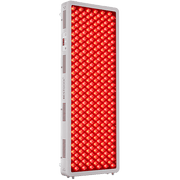









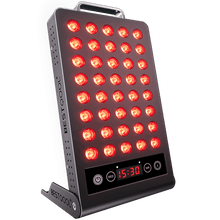
 Small
Small
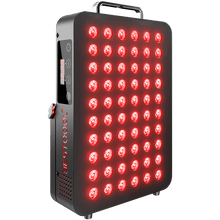
 Moderate
Moderate
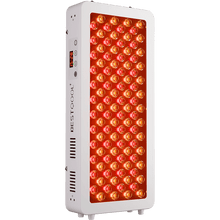
 Moderate
Moderate
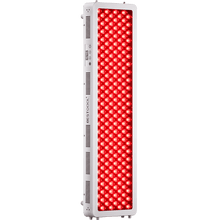
 Moderate
Moderate
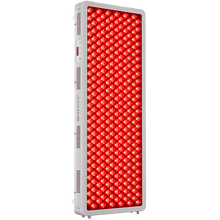
 Full
Full



